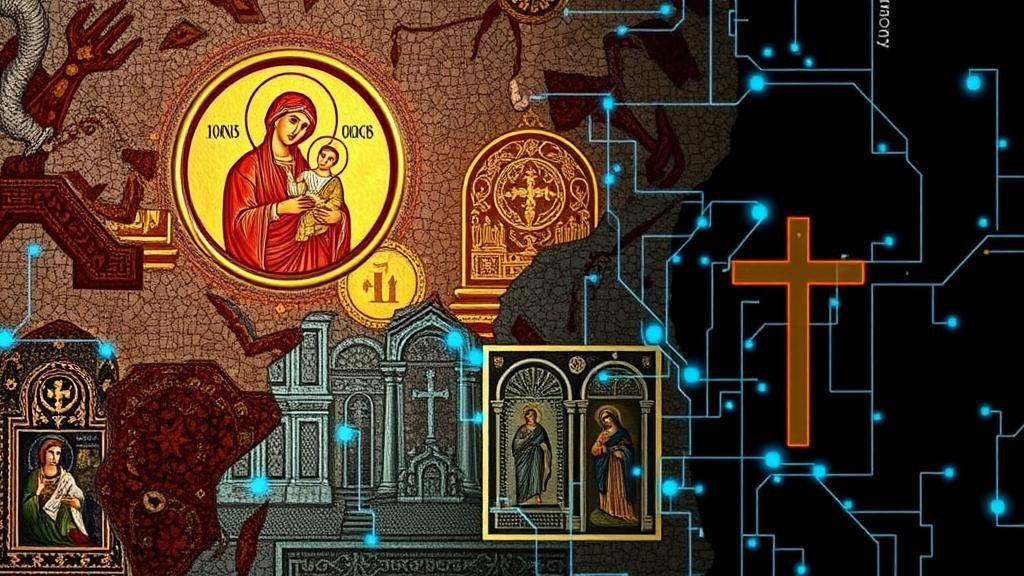Training AI to Find Relationships Between Religious Iconography and Relic Locations
Training AI to Find Relationships Between Religious Iconography and Relic Locations
The intersection of artificial intelligence (AI) and religious studies presents a promising frontier for both fields. By training AI models to identify and analyze the relationships between religious iconography and the geographical locations of relics, scholars can develop a more nuanced understanding of cultural significance, historical context, and evolving practices within religious communities. This article explores the methodologies for training AI in this domain, the potential findings, and the implications for both academia and religious practitioners.
Theoretical Framework
To effectively analyze the relationships between religious iconography and relic locations, it is essential to establish a theoretical framework that underpins AI learning. two primary components of this study are:
- Religious Iconography: This refers to the visual imagery associated with religious traditions, which conveys symbolic meanings and narratives, often emanating from sacred texts or oral histories.
- Relic Locations: The geographical sites where religious relics–objects with religious significance–are housed or venerated. This includes churches, temples, shrines, and pilgrimage routes.
Significance of the Study
This study aims to bridge the gap between technology and humanities by leveraging AIs capabilities to analyze vast datasets. Religious iconography has been historically significant in shaping cultural identities, and understanding the locations of relics can unveil deeper insights into the societal values, practices, and historical events that shape religious landscapes.
Methodology
The methodology used in this research involves the application of machine learning algorithms and data humanities approaches. It encompasses the following steps:
Data Collection
Data collection is critical for training AI models. Key sources for religious iconography and relic locations include:
- Historical Texts: Manuscripts and scriptures from various religious traditions often include descriptions of sacred imagery and relics.
- Digital Archives: Online databases, such as the Digital Public Library of America and Europeana, provide access to a vast range of religious imagery and documentation.
- Geographical Information Systems (GIS): Tools like ArcGIS can provide spatial context for analyzing relic locations.
Data Preprocessing
Data preprocessing involves cleaning and structuring the data into formats suitable for AI training. For this study, image recognition algorithms, such as convolutional neural networks (CNNs), are employed to analyze religious iconography. Meanwhile, natural language processing (NLP) techniques are used to interpret and categorize textual descriptions related to relics.
Model Training
During the model training phase, supervised learning techniques can be utilized where labeled datasets are provided for the AI to learn from. Identifying patterns and correlations between the iconography and locations of relics allows the model to infer relationships. For example:
- Determining the prevalence of specific iconographic themes associated with particular geographical locations.
- Uncovering historical transitions in iconography due to socio-political influences.
Potential Findings
Through rigorous analysis, several potential discoveries may emerge from this research:
Correlations Between Iconography and Pilgrimage Sites
Studies may reveal that certain iconographic elements, such as depictions of saints or divine figures, are predominantly present in locations with historical significance as pilgrimage sites, such as Santiago de Compostela in Spain. representation of iconography has the potential to guide the understanding of spiritual geography within religious traditions.
Influence of Historical Events
The model might also uncover discrepancies and shifts in iconographic representations following specific historical events, such as the Reformation or the conquests of the Crusades. Analyzing how cultural exchanges influence iconography can contribute to a broader understanding of religious syncretism.
Challenges and Ethical Considerations
While the potentials of this research are promising, several challenges must be addressed:
Data Limitations
Access to comprehensive datasets of religious iconography can be limited, especially for lesser-known or indigenous traditions. Incomplete data can hinder the AI models accuracy and findings.
Ethical Concerns
Ethical implications must also be considered, particularly concerning the representation of diverse religious practices. Researchers should avoid cultural appropriation and ensure collaborative approaches to using indigenous knowledge.
Conclusion and Future Directions
Training AI to find relationships between religious iconography and relic locations is an innovative endeavor that holds significant scholarly potential. As AI technology evolves, further research may explore dynamic interactions between iconography and physical relics in real-time contexts, enhancing our understanding of ongoing religious practices. By approaching this task with rigor, sensitivity, and collaboration, researchers can uncover valuable insights that honor the complexities of faith traditions across the globe.
Moving forward, it is essential to foster interdisciplinary collaborations that bring together technologists, historians, and religious scholars to refine methodologies and broaden insights in this exciting field of study.



